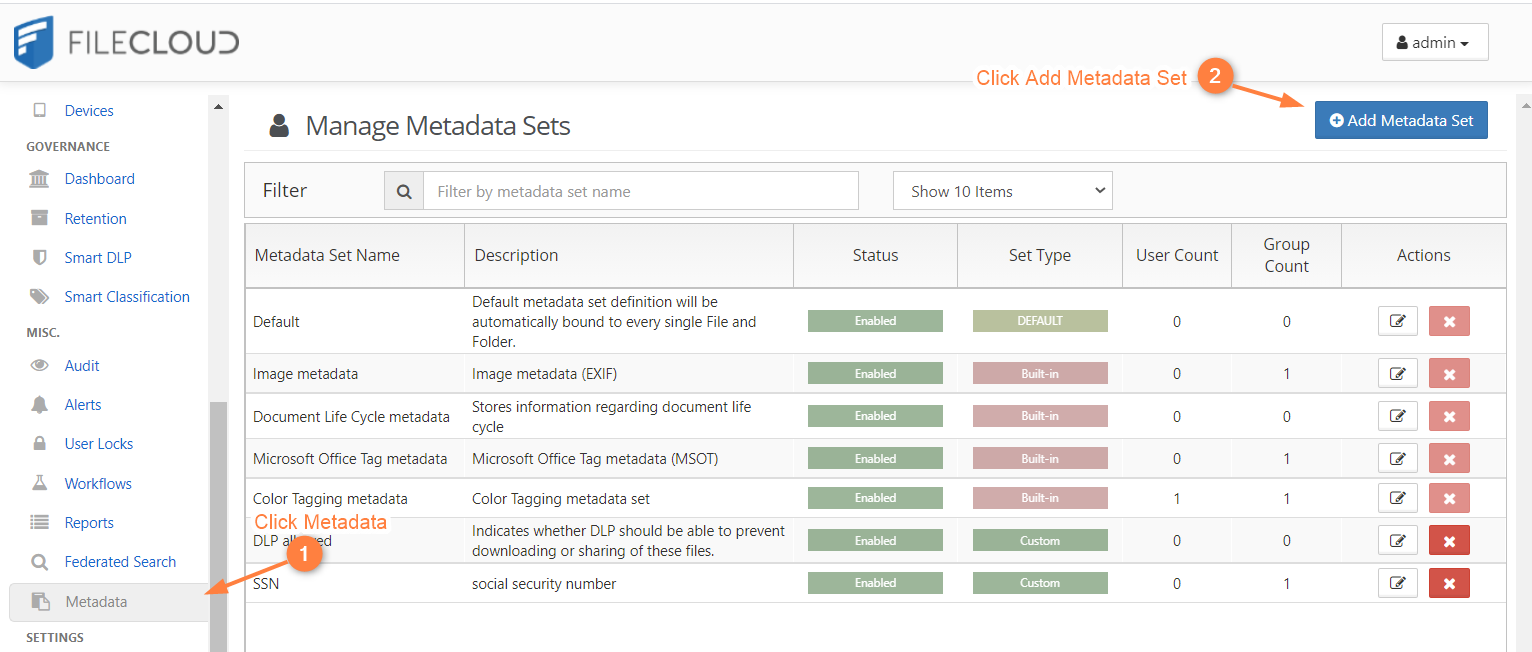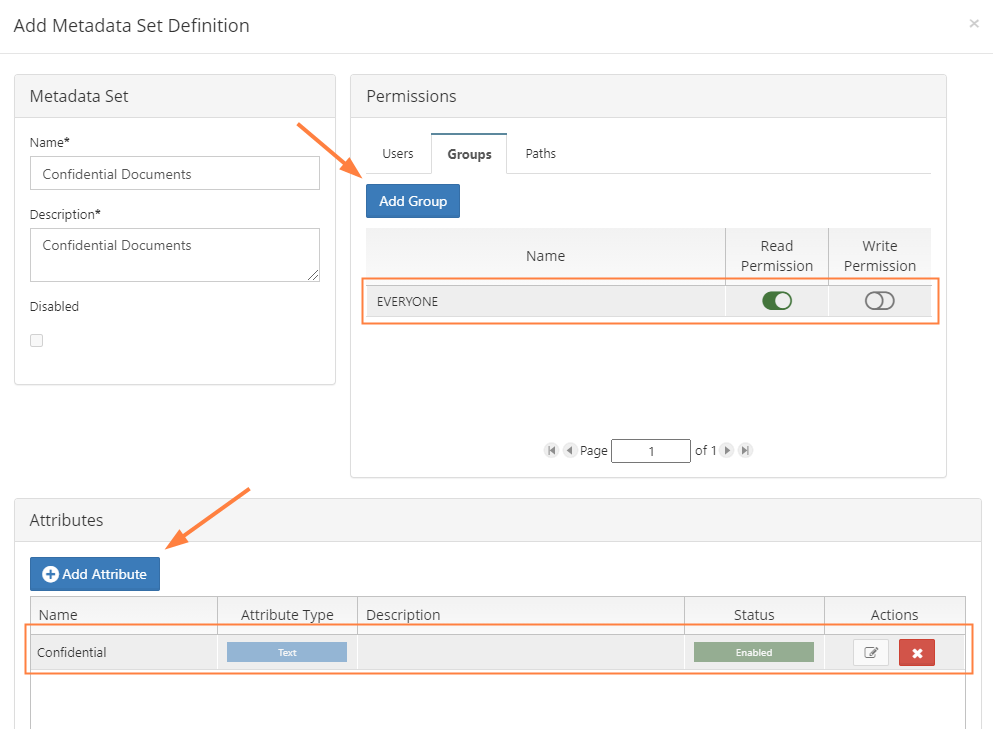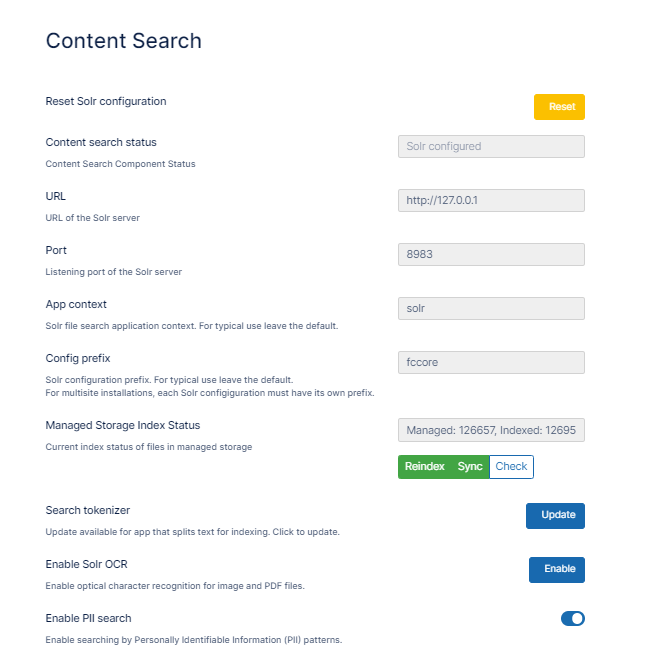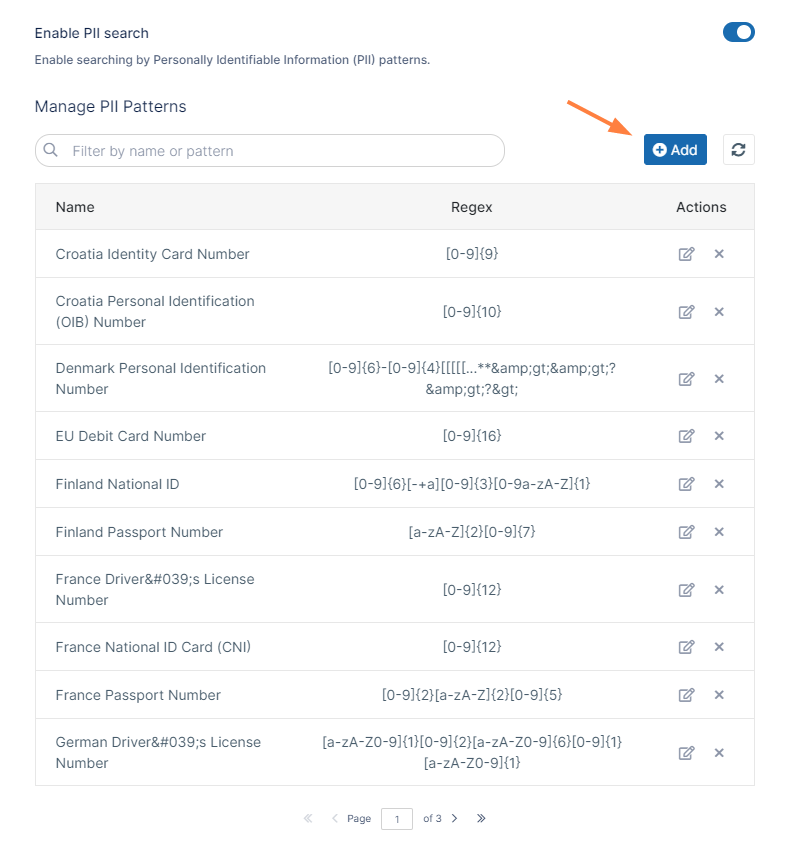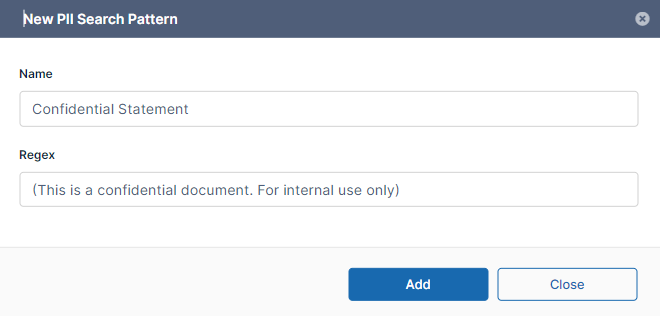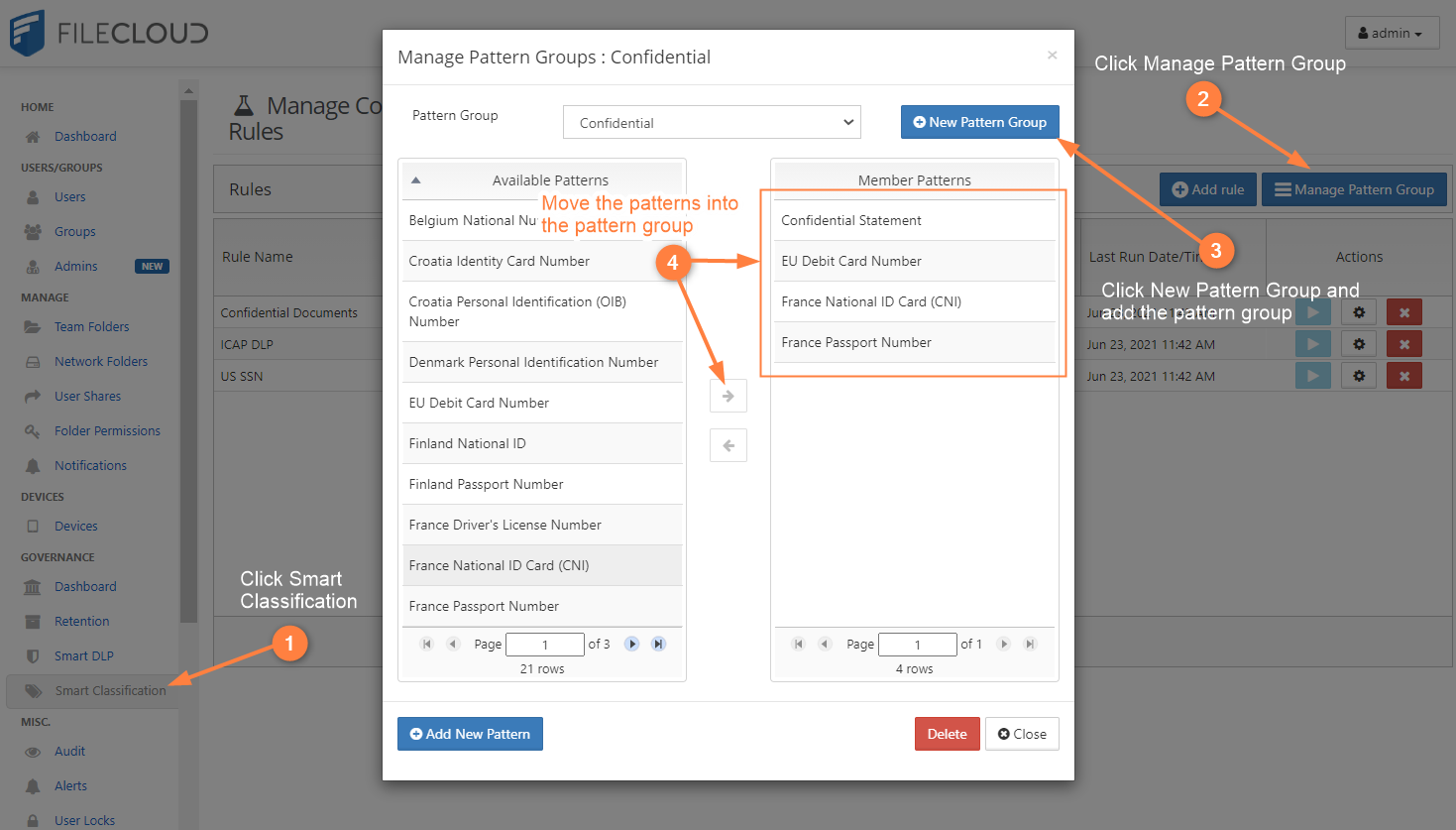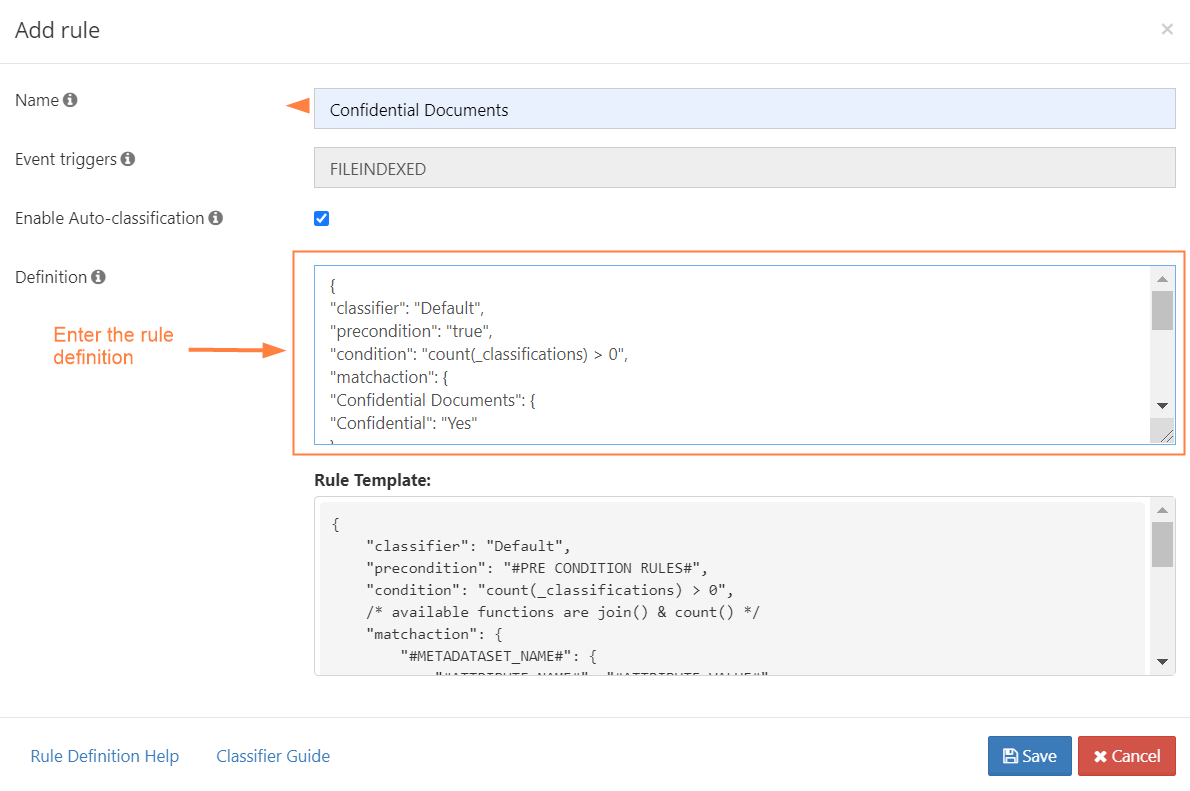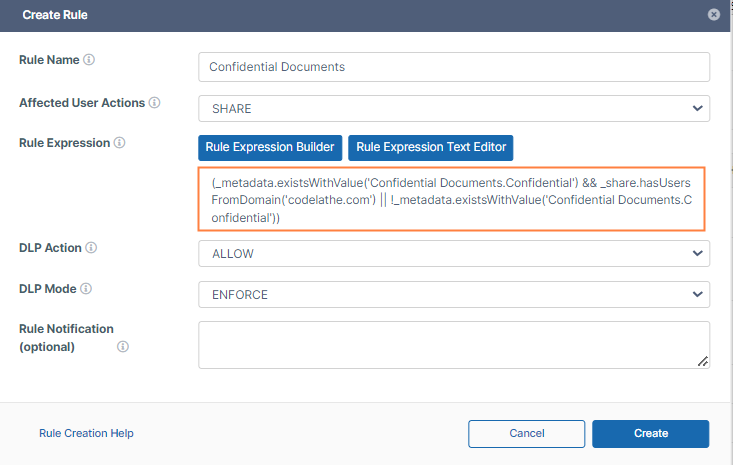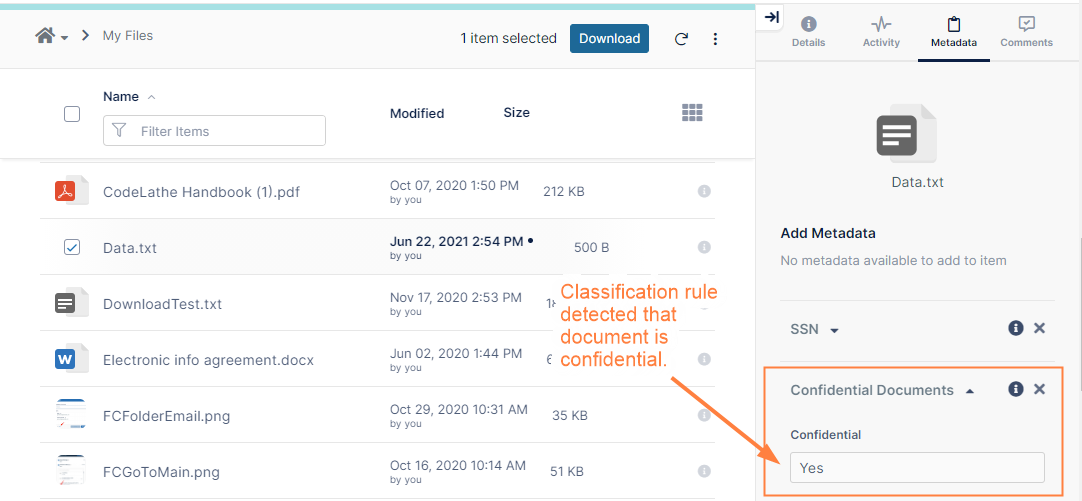Detect confidential documents with PII and allow internal shares only
Overview:
The purpose of this example is to:
- Create a classification rule that detects confidential documents using a group of personally identifiable information (PII) patterns.
- Tag the documents with attributes that specify if they are marked confidential.
- Create a DLP rule that allows only internal sharing of documents tagged as confidential, but allows external sharing of documents not tagged as confidential.
Configuration Steps:
1. Create Metadata Set
- Log in to the FileCloud Admin portal, and in the navigation panel, click Metadata, then click Add Metadata Set.
- Create a metadata set named Confidential Documents with the attribute Confidential of type text.
- Choose the Users/Groups that can see this metadata and provide them with read permission.
2. Create the PII Regex Patterns Group
- In the FileCloud admin portal's left navigation bar, scroll down and click Settings. Then, on the Settings navigation page, click Content Search .
The Content Search page opens. - Check Enable PII Search.
- Click Add to add a PII patten for your confidential Information.
Enter the new PII search pattern, and set Regex to the confidential statement to detect inside your documents, for example, "(This is a confidential document, For internal use only)". Note that statement should be inside ().
If you have multiple statements to detect in your document you can use (statement1) | (statement2 ) | (statement3) . In this example, you are also adding the pre-defined patterns with personally identifiable information listed below. - Confidential Statement Pattern:
Also select:
European Debit Card number Pattern
France National ID Card (CNI)
France Passport Number - Add the different patterns into a pattern group:
3. Create the Smart Classification Rule
- Log in to the FileCloud Admin portal, and in the navigation panel, click Smart Classification.
- Add a new classification rule
Make sure to specify the exact name of the metadata along with attribute name and PII Regex pattern. In the Add Rule dialog box, enter the following into Definition:
{ "classifier": "Default", "precondition": "true", "condition": "count(_classifications) > 0", "matchaction": { "Confidential Documents": { "Confidential": "Yes" } }, "defaultaction": { "Confidential Documents": { "Confidential": "No" } }, "parameters": { "SEARCH_PATTERN_GROUPS": [ "Confidential Info" ] } }
4. Create the Smart DLP Rule
- Log in to the FileCloud Admin portal. In the navigation panel, click Smart DLP.
- Add a new DLP rule
- For documents that are confidential, the rule checks for metadata attribute "Confidential" = "Yes" and allows sharing with only domain "codelathe.com".
- For documents that are non-confidential, the rule checks for metadata attribute "Confidential" = "No" and allows sharing with all domains.
5. Upload documents to Filecloud's user portal
- Log in to the FileCloud user portal.
- Upload multiple documents to My Files or to a Team Folder. Some of the files should contain confidential information.
- The classification rule will detect documents that contain confidential information and set the attribute "Confidential" to "Yes".
- The classification rule will detect documents that do not contain confidential information and set the attribute "Confidential" to "No".
Content of uploaded document with confidential statement in it:
6. Test the Smart DLP rule
- Log in to the FileCloud user portal and share a file that contains confidential information.
- Confirm that sharing is only allowed with users from the domain "codelathe.com".
